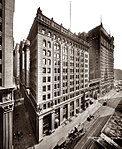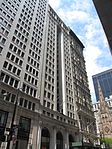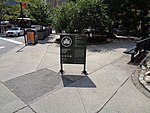China Chalet
1975 establishments in New York City2020 disestablishments in New York (state)Chinese-American culture in New York CityChinese restaurants in the United StatesCultural history of New York City ... and 6 more
Financial District, ManhattanFormer music venues in New York CityNightclubs in ManhattanRestaurants disestablished in 2020Restaurants established in 1975Restaurants in Manhattan

China Chalet was a Chinese restaurant located in the Financial District of New York City. Opened in 1975, the restaurant operated as a luxury dim sum banquet hall catering to a business clientele. Beginning in the 2000s, China Chalet contemporaneously operated as a rental space for nightlife events, alternately serving as an event space, nightclub, and concert venue. China Chalet permanently closed in 2020.
Excerpt from the Wikipedia article China Chalet (License: CC BY-SA 3.0, Authors, Images).China Chalet
Broadway, New York Manhattan
Geographical coordinates (GPS) Address Nearby Places Show on map
Geographical coordinates (GPS)
| Latitude | Longitude |
|---|---|
| N 40.706583333333 ° | E -74.012972222222 ° |
Address
Broadway 47
10006 New York, Manhattan
New York, United States
Open on Google Maps










